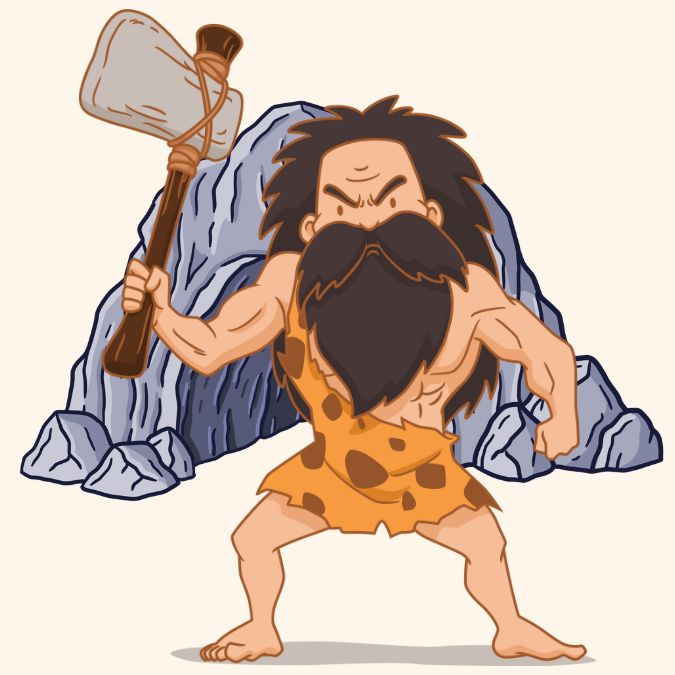
📝 What Is Prehistory? – A Journey Before Written Records
Before pyramids rose or empires ruled, there was Prehistory — the vast period of time before humans invented writing. It's not just a forgotten era filled with cave paintings and stone tools. It's the foundation of human history, where our ancestors learned to survive, create, cooperate, and evolve.
Prehistory covers millions of years and provides answers to some of our biggest questions:
- Where did we come from?
- How did early humans live?
- What tools and ideas shaped our survival?
Let’s explore the meaning of Prehistory, how we study it, and the key stages that shaped the dawn of humanity 🌍.
📚 What Is the Concept of Prehistory?
Prehistory is the time before the existence of written records. While History begins with the invention of writing (around 3,200 BCE in Mesopotamia), Prehistory goes way back — over 2.5 million years ago.
That means Prehistory includes:
- The first appearance of early humans
- The development of basic tools
- The discovery of fire
- The invention of agriculture
- The rise of early communities
Because there were no written documents, we rely on material evidence left behind — tools, bones, cave art, and ruins — to understand how prehistoric people lived, hunted, built, and thought.
🔍 How Do We Study Prehistory? The Main Disciplines
Studying a period with no written records requires careful science and observation. Here are the main methods used to reconstruct the prehistoric past:
🏺 1. Archaeology – Digging into the Past
Archaeologists study the physical remains of past human activity: tools, weapons, pottery, burial sites, and cave dwellings.
- They conduct excavations and analyze artifacts (objects made or used by humans).
- Dating techniques like carbon-14 dating help estimate how old objects are.
- Archaeology gives us clues about the way people lived, what they ate, and how they organized their communities.
📌 Example: The discovery of Göbekli Tepe in Turkey, a massive 11,000-year-old temple, reshaped our understanding of early religion and architecture.
🧬 2. Anthropology – Understanding Human Behavior
Anthropologists focus on human culture and behavior. They explore how early people interacted, formed families, adapted to their environments, and passed on traditions.
- Cultural anthropology looks at rituals, beliefs, and traditions.
- Biological anthropology studies human evolution and the physical development of early hominins.
📌 Example: Comparing modern hunter-gatherer societies to prehistoric groups helps us imagine how early communities lived.
🦴 3. Paleontology – Tracing Life Before Us
Paleontologists study fossils — the preserved remains of plants, animals, and early hominins.
- They analyze skulls, bones, and teeth to learn about species like Australopithecus or Homo erectus.
- Their work helps map the evolutionary tree and understand how we transitioned from primates to Homo sapiens.
📌 Example: The famous “Lucy” skeleton (Australopithecus afarensis), discovered in Ethiopia in 1974, is about 3.2 million years old and proved that early humans walked upright.
🗂️ The Three Major Periods of Prehistory
Prehistory is typically divided into three main stages, based on technological and social development:
- Paleolithic (Old Stone Age)
- Neolithic (New Stone Age)
- The Age of Metals
Let’s break down each one 👇
🪨 1. Paleolithic Era (2.5 million – 10,000 BCE)
Also known as the Old Stone Age, this is the longest period of Prehistory. Humans lived as hunter-gatherers, used simple tools, and moved constantly in search of food.
Key Characteristics:
- Nomadic lifestyle 🏕️
- Lived in caves or temporary shelters
- Used stone tools and later bone and wood
- Discovered fire 🔥 (crucial for cooking, warmth, and protection)
- Developed spoken language
- First signs of spiritual beliefs (e.g., burial practices)
- Cave art in places like Lascaux (France) and Altamira (Spain)
👤 Important Hominins:
- Homo habilis – “handy man,” first toolmakers
- Homo erectus – first to control fire
- Homo neanderthalensis – buried their dead, cared for the injured
- Homo sapiens – our direct ancestors
🔑 Innovations:
- Flint tools, spears, scrapers
- Fire control
- Symbolic art – drawings of animals and human figures
- Early religion – belief in afterlife, rituals
🌾 2. Neolithic Era (10,000 – 3,000 BCE)
The Neolithic, or New Stone Age, marked a revolution in human life. People transitioned from nomadic hunting to settled farming. This shift is often called the Neolithic Revolution.
Key Characteristics:
- Agriculture began 🌱
- Domestication of animals (dogs, sheep, goats)
- Permanent settlements appeared 🏡
- Pottery and weaving developed
- Stone tools became more polished and specialized
- Social structures and early forms of governance emerged
📍 Important Sites:
- Çatalhöyük (Turkey) – one of the world’s first cities
- Jericho (West Bank) – one of the oldest known settlements with walls
🔑 Innovations:
- Farming and irrigation
- Food storage in pottery jars
- Spinning and weaving textiles
- Construction of houses and granaries
- Rise of religious temples and figurines (e.g., fertility goddesses)
🌟 This era laid the groundwork for civilizations, including writing, cities, and trade.
⚒️ 3. Age of Metals (c. 3,000 – 1,000 BCE)
The final stage of Prehistory saw metal tools and weapons replace stone. This innovation led to faster farming, more effective warfare, and the rise of complex societies.
Subdivisions:
- Copper Age (Chalcolithic)
- Bronze Age
- Iron Age
Key Characteristics:
- Use of copper, bronze (an alloy of copper and tin), and later iron 🛠️
- Craft specialization – metallurgy, trade, construction
- Social hierarchy – kings, warriors, artisans, farmers
- Trade routes expanded
- Invention of the wheel, sail, and plow
- Development of writing systems in some regions (end of Prehistory)
📍 Key Civilizations Emerging:
- Sumerians in Mesopotamia (c. 3,000 BCE)
- Ancient Egyptians, Indus Valley, and Chinese civilizations
🔑 Innovations:
- Metal weapons and tools
- Organized armies and fortified cities
- Early monarchies and priesthoods
- Writing (marks the end of Prehistory and beginning of History)
🌍 Why Is Prehistory Important?
Understanding Prehistory gives us a deeper appreciation for our roots. It shows us:
- How we evolved biologically and socially
- The origins of culture, art, and religion
- The incredible adaptability of humans
- The innovations that allowed us to build civilizations
💡 Even today, new discoveries from Prehistoric times are changing how we understand human development. Excavations, DNA studies, and radiocarbon dating continue to uncover amazing insights.
🧠 Conclusion: Prehistory Is the Foundation of Humanity
Though often overlooked in favor of “historic” periods with kings, wars, and empires, Prehistory is where it all began. It’s a story of survival, discovery, and transformation.
From the first spark of fire to the forging of metal, from cave paintings to farming villages, our ancestors laid the path we now walk.
Studying Prehistory isn’t just about the past — it’s about understanding who we are as humans.
✅ Key Takeaways:
- Prehistory = time before writing (before 3,200 BCE)
- Studied through archaeology, anthropology, and paleontology
- Divided into:
- Paleolithic: stone tools, fire, cave art
- Neolithic: agriculture, villages, pottery
- Age of Metals: copper, bronze, iron, early civilizations
- Helps us understand human evolution, innovation, and culture
🔗 Reliable Sources:
- British Museum
- UNESCO World Heritage
- Smithsonian National Museum of Natural History
- Khan Academy (World History)
- "Sapiens: A Brief History of Humankind" by Yuval Noah Harari (2011)

